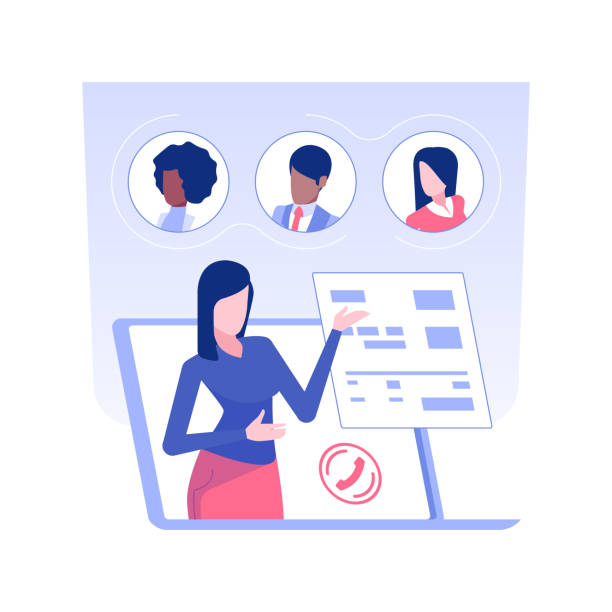Introduction and Importance of Multilingual Website Design in Today’s World

In today’s interconnected world, #Global_Access is vital for every business.
One of the most effective ways to achieve this goal is #Multilingual_Website_Design.
This approach allows you to deliver your message to a wider audience beyond geographical and cultural boundaries.
The importance of this is not only in increasing sales and expanding the market, but also in building deeper connections with users from different nationalities.
Have you ever thought about how your website can be a bridge between cultures? With a multilingual website, you will be able to respond to the linguistic needs of your audience and gain their trust.
This is not just a choice, but a strategic necessity for sustainable growth in the digital age.
From an educational perspective, this chapter shows you how to take a big step towards internationalization with correct implementation.
Implementing multilingual website design means going beyond simple text translation; this process includes full content localization, considering cultural differences, and technical optimization for search engines in various languages.
An in-depth analysis shows that businesses adopting this strategy experience a significant increase in site traffic, conversion rates, and customer loyalty.
For example, companies that offer their services in local languages not only conquer new markets but also strengthen their brand credibility on a global scale.
This is an explanation for the necessity of investing in this area.
Digital influencers and international marketing experts are increasingly emphasizing the importance of creating multilingual websites.
This approach is not just a passing trend, but a fundamental pillar in modern digital marketing strategies.
In an era where information spreads rapidly across the globe, having a communication platform that can speak to every user in their own language is invaluable.
This introduction to the upcoming chapters provides a foundation for a deeper understanding of the benefits and challenges of multilingual web architecture.
Is your current e-commerce site design causing you to lose customers and sales?
Rasawb is your solution with modern and user-friendly e-commerce website designs!
✅ Significant increase in conversion rates and sales
✅ Strong branding and building customer trust
⚡ Get free e-commerce website design consultation from Rasawb!
Countless Benefits of a Multilingual Website for Businesses

#Market_Expansion and #Global_Audience_Attraction are among the most important goals for any business today.
Multilingual website design is not just a competitive advantage, but a strategic investment for a brighter future.
One of its most prominent benefits is a significant increase in market access to new markets.
When your website is available in various languages, you can reach audiences who were previously unable to interact with you due to language barriers.
This creates new sales and service opportunities that can lead to exponential growth for your business.
This is an analysis of the direct impacts of this approach.
In addition to market expansion, a multilingual website directly impacts the improvement of brand credibility and image.
Providing content in users’ native language demonstrates respect for their culture and needs, conveying a sense of trust and professionalism.
Research shows that most users prefer to shop from websites that offer content in their native language.
This is not just a simple explanation, but a proven fact in the global online market.
Furthermore, increased ranking in search engines for keywords in different languages significantly boosts organic site traffic, which in turn reduces marketing costs.
Another important advantage is the increased conversion rate.
When users can easily understand your products or services in their own language, the likelihood of purchasing or using your services greatly increases.
Designing inclusive websites also allows you to offer customer support in various languages, which leads to greater satisfaction and long-term customer loyalty.
From the perspective of thought-provoking content, is your business willing to lose a significant portion of the global market due to the lack of a multilingual website? This is a question every business manager should consider.
Critical Technical Aspects in Multilingual Website Design

Successful implementation of #Technical_Architecture and #Multilingual_URL is a fundamental pillar in multilingual website design.
This section addresses technical aspects that developers and webmasters must carefully consider.
Choosing the appropriate URL structure for each language is of paramount importance, as it directly affects site SEO and user experience.
Three main approaches include using country code top-level domains (ccTLD), subdomains, and subdirectories.
Each of these methods has its own advantages and disadvantages in terms of SEO, hosting, and management.
For example, ccTLDs like `yourdomain.de` for Germany provide the strongest geographical signal to search engines but are more complex to manage.
Practical guidance for choosing the right URL structure can vary depending on business goals and available resources.
Using hreflang tags in the <head> section of the site or in the XML Sitemap to indicate the relationship between different language versions of a page is crucial.
These tags help search engines deliver the correct version of the page based on the user’s language and geographical location.
Without these precise technical configurations, even the best translated content may not be visible in search results.
A comprehensive explanation on how to implement these tags to ensure proper coverage is available.
Next, we will compare these structures to gain a better understanding of the optimal choice for multilingual web systems.
| URL Structure Type | Example | Advantages | Disadvantages |
|---|---|---|---|
| Country Code Top-Level Domains (ccTLD) | yourdomain.de |
Best for local SEO, strongest geographical signal | Costly, requires separate hosting, management complexity |
| Subdomains | fr.yourdomain.com |
Ease of setup, shared hosting, geo-targeting capability | May not fully inherit authority from the main domain |
| Subdirectories | yourdomain.com/fr/ |
Ease of setup and management, passes main domain authority, lowest cost | Weaker geographical signal compared to ccTLDs and subdomains |
Effective Content and Translation Strategy for Multilingual Websites

#Content_Management and #Localization are two main pillars in the success of a multilingual website design.
Simply literal translation of texts is not enough; for your content to truly resonate with international audiences, you must go beyond words and pay special attention to cultural, social, and even political differences.
Initial guidance in this area is to plan a comprehensive localization strategy that includes researching target audiences in each region and understanding their needs and expectations.
This approach helps you produce content that is not only linguistically correct but also culturally appropriate and pleasing.
One of the main challenges in creating multilingual websites is choosing between human translation, machine translation (MT), or a combination of both.
Machine translation can be useful for large volumes of content and for speeding up the initial process, but for sensitive, marketing content, or any text requiring high tone and accuracy, specialized human translation and localization by native speakers are essential.
A comprehensive explanation on how to implement these tags to ensure proper coverage is available.
To ensure engaging content, it must be considered that content is not just text; images, videos, and even colors must be localized according to the target audience’s culture.
For example, a color that symbolizes happiness in one culture may have a negative meaning in another.
Is your website optimized for every culture? This is a question you should ask yourself before publishing content.
These educational aspects help you avoid common mistakes and provide a seamless experience for your global users.
How much does losing business leads due to an unprofessional website cost you? Solve this problem forever with professional corporate website design by Rasawb!
✅ Increased credibility and trust of potential customers
✅ Easier attraction of new business leads
⚡ Get a free consultation now!
Multilingual SEO: A Path to Greater Global Visibility
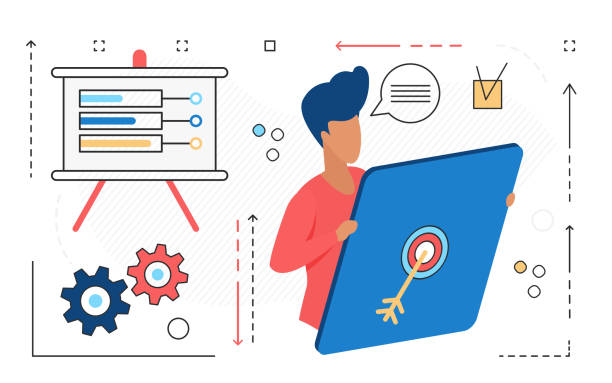
#International_SEO is an integral part of success in international website design.
Without a proper SEO strategy, even the best translated content may not be visible in local search engines.
One of the most important tools in this regard is the correct implementation of the #Hreflang tag.
This tag tells search engines like Google which version of the page is intended for which language and geographical region, so users are directed to the appropriate content version, and duplicate content issues are avoided.
This is a technical and essential aspect to ensure your site’s visibility.
In addition to hreflang, keyword optimization for each language is also crucial.
Mere translation of keywords is often not enough; you must conduct keyword research separately for each target market, as the words and phrases people use to search vary from culture to culture.
Also, ensuring that the site’s loading speed is optimized in all languages and geographical regions plays a vital role in SEO ranking and user experience.
Using a CDN (Content Delivery Network) to deliver content from the closest server to the user can help improve speed.
This is practical guidance for improving your site’s global performance.
A detailed analysis of competitors in local markets can help identify SEO opportunities that may have been overlooked.
Link building with reputable local websites and receiving backlinks from them also sends strong positive signals to search engines.
Furthermore, considering geo-targeting in Google Search Console and other webmaster tools is essential for search engines to correctly identify your target audience.
These comprehensive tips ensure that your multilingual site’s SEO strategy is not only effective but also maximizes global visibility.
Enhancing User Experience in Inclusive Websites
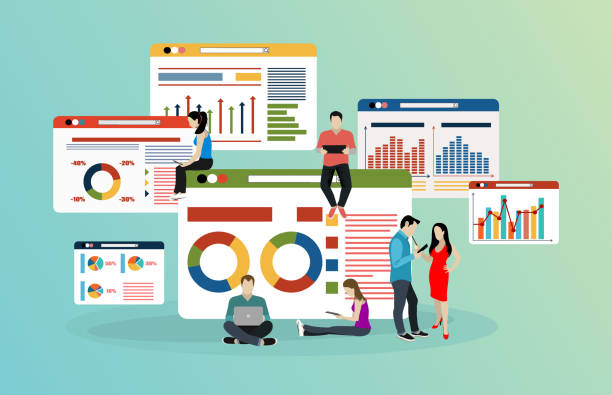
#User_Experience (UX) plays a pivotal role in the success of any website, and for inclusive websites, this importance is doubled.
A great multilingual site can only be effective if users from every culture and language can easily interact with it and meet their needs.
Localizing UX means going beyond content translation and includes adjusting visual, navigational, and even functional aspects of the site to match users’ cultural expectations.
For example, text reading direction (right-to-left or left-to-right), use of culturally appropriate icons and images, and even date and time formats must be considered.
The Language Switcher should be easily accessible and understandable.
Placing it in a prominent and standard location (such as the site header) is a key guidance.
Also, you must ensure that the user experience when changing languages is smooth and error-free, and that the user is not suddenly redirected to the site’s homepage, but rather to the translated version of the current page.
This is an important explanation for maintaining user experience consistency.
Did you know that even the smallest cultural differences in UI design can have a big impact on your site’s acceptance in a specific market?
Paying attention to cultural considerations in design, such as colors, symbols, and images, can significantly impact the perception and acceptance of your brand.
For instance, a color that symbolizes joy in one culture might have a negative meaning in another.
Ensuring website compatibility with various devices (responsiveness) and high loading speed for users worldwide is also crucial, as internet access can differ across regions.
These aspects are not entertaining but are essential for your site’s long-term success and help you provide an unparalleled and truly global user experience.
Facing Challenges and Providing Solutions in Multilingual Website Implementation

Implementing a multilingual website is not without challenges.
Various #Multilingual_Challenges, including content management, maintaining translation quality, international SEO, and continuous updates, can face developers and webmasters.
One of the biggest issues is ensuring translation quality.
Machine translations might be fast and cheap, but they often lack the cultural nuances and accuracy required for sensitive or marketing content.
Careful analysis of your content needs for each language is key to choosing the appropriate translation method.
To solve this problem, it is recommended to use a combination of specialized human translation and translation management tools (TMS).
TMS helps in creating Translation Memory and Terminology, which over time increases the quality, speed, and reduces translation costs.
Another challenge is maintaining consistency between different language versions; meaning that when the original content is updated, the translated versions must also be updated quickly and correctly.
This is crucial guidance to prevent displaying outdated information to users.
The table below examines the most common translation methods and their advantages and disadvantages for translation management in multilingual websites:
| Translation Method | Advantages | Disadvantages | Suitable Application |
|---|---|---|---|
| Machine Translation (MT) | High speed, low cost for large volumes, suitable for non-sensitive content | Low accuracy, lack of cultural nuance, requires human editing | High-volume, non-sensitive content, basic customer support |
| Human Translation | High accuracy, cultural localization, maintains brand tone and message | Time-consuming, costly, less scalable for high volumes | Sensitive marketing, legal, medical, technical content |
| Post-Edited Machine Translation (PEMT) | Balance between speed and quality, moderate cost | Still requires human input, quality depends on editor’s skill | Blogs, news, non-sensitive product descriptions |
| Translation Management Systems (TMS) | Increased efficiency, maintains consistency, long-term cost reduction | Requires initial investment, learning curve | Large and ongoing projects, team collaboration |
Choosing the Best Tools and Platforms for Multilingual Web Architecture
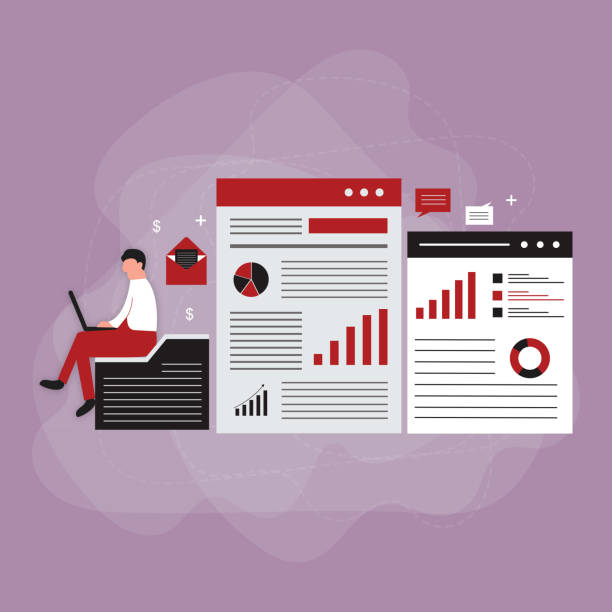
Choosing the right tools and platforms for #Multilingual_Web_Architecture and #Multilingual_CMS is a crucial step in the success of international website development.
This decision must be based on specific business needs, budget, required scalability, and ease of content management in different languages.
Content Management Systems (CMS) like WordPress, Joomla, and Drupal offer powerful built-in solutions or plugins for multilingual support.
For example, plugins like WPML or Polylang for WordPress make multilingual content management simple.
This is a practical guide for getting started.
In addition to CMS, dedicated Website Translation Platforms also exist, specifically designed for this purpose.
These platforms typically provide advanced features such as automatic content detection, integrated machine translation, translation memory, and translation management workflows.
The choice between a CMS with a multilingual plugin and a dedicated platform depends on the volume of content, the number of languages, and the need for deep localization.
An explanation of how these platforms can automate the process and reduce costs in the long run is very important.
When choosing tools, pay attention to multilingual SEO support, user-friendly language switcher capabilities, and compatibility with other digital marketing tools.
Also, considering the platform’s scalability for adding new languages in the future is a technical aspect that should not be overlooked.
Do these tools allow for the management of localized images and videos? Do they support local date and time formats? These are questions that should be asked before making a final decision.
The goal is to create a multilingual website structure that is not only efficient but also facilitates the future growth of your business.
Are you concerned about your e-commerce site’s low conversion rate and not achieving desired sales?
Rasawb is your specialized solution for having a successful e-commerce site.
✅ Significant increase in conversion rates and sales
✅ Professional and user-friendly design to attract customer satisfaction
⚡ Ready for a transformation in online sales? Get a free consultation!
Maintenance, Updates, and Quality Assurance in Multilingual Web Systems

After implementation, #Multilingual_Maintenance and #Quality_Assurance of content are of particular importance.
A multilingual web system is living and dynamic and requires continuous care and updates to remain effective and relevant.
The first step in this direction is to establish a regular process for reviewing and updating translated content, especially when the main site content changes.
This process can include automatic notifications for translators or a regular schedule for manual reviews.
This is a key guidance for maintaining content accuracy and freshness.
For quality assurance, translated content must be continuously checked for grammar, spelling, cultural appropriateness, and even tone.
Using native-speaking reviewers for final content checks before publication can significantly help improve quality.
This not only includes text, but also ensuring the correct display of images, videos, and any other visual elements in each language and culture.
Do internal and external links in the translated versions work correctly? This is a thought-provoking question that needs to be answered.
Monitoring international SEO performance is also a crucial aspect of maintenance.
You should regularly check keyword rankings, organic traffic, and bounce rate for each language version.
This analysis helps you identify potential issues and optimize your SEO strategy.
Also, collecting user feedback through surveys or analytical tools can provide valuable information about their experience with your multilingual website.
Continuous maintenance and attention to detail not only increase your website’s lifespan but also guarantee the satisfaction and loyalty of your international users.
The Future of International Website Design and New Trends
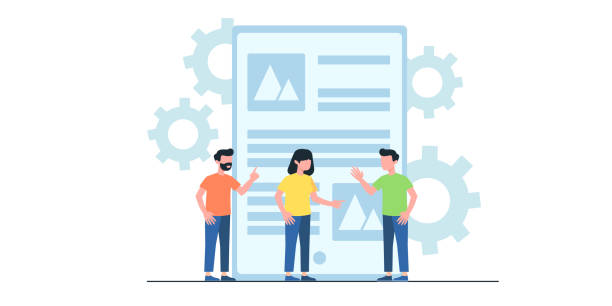
The #Multilingual_Future of websites, especially with significant advancements in technology, particularly in Artificial Intelligence and Machine Learning, looks more exciting than ever.
#AI_Translation is transforming the translation process, offering faster, more accurate, and more scalable solutions.
These advancements enable businesses to penetrate global markets more quickly and provide their content in multiple languages in real-time.
This is good news for anyone considering developing international websites.
One of the new trends is the use of Neural Machine Translation (NMT), which is capable of producing translations with quality close to human translation and can be very effective in content localization.
Furthermore, automated localization and content management tools are expected to become more advanced and, with deeper integrations with CRM and ERP systems, will further streamline international marketing and sales processes.
An analysis of these trends indicates that language barriers are gradually disappearing, but the need for deeper cultural understanding will never diminish.
Is your website ready for this future? This is a thought-provoking question that every webmaster and business owner must answer.
It is predicted that content personalization based on language, region, and even individual user preferences will become a standard.
This means that designing inclusive websites will not only involve translation but also providing fully customized experiences for each user.
These developments offer unparalleled opportunities for deeper engagement with global audiences and achieving sustainable growth.
Frequently Asked Questions
| Question | Answer |
|---|---|
| What is a multilingual website? | It is a website whose content is available to users in several different languages. |
| Why should we design a multilingual website? | To expand access to international audiences, increase website traffic, improve SEO in target markets, and provide a better user experience for non-Persian speaking users. |
| What are the main methods for implementing a multilingual website? | Using subdomains (e.g., en.mysite.com), using subdirectories (e.g., mysite.com/en/), and using separate domains for each language (e.g., mysite.com and mysite.de). |
| Which implementation method is better for SEO? | Generally, using subdirectories (language folders) is often recommended due to the transfer of main domain authority to other languages. |
| What is the Hreflang tag and what is its purpose? | It is an HTML tag or HTTP Header that informs search engines which version of a page is suitable for which language or geographical region. This tag prevents Duplicate Content and improves SEO. |
| How is the Language Switcher designed? | Typically designed using a dropdown menu, button, or flag in the website’s header or footer, allowing the user to select their preferred language. |
| Is automatic (machine) translation suitable for a multilingual website? | No, machine translation usually has low quality and many errors that can harm the website’s credibility. Human translation or a combination of human translation and machine post-editing is recommended. |
| What are the most important SEO tips in multilingual website design? | Correct use of the Hreflang tag, having an appropriate URL structure for each language, translating titles and meta descriptions, translating main content, and internal linking between related language versions. |
| Should all website content be translated? | It depends on the strategy. Usually, the main and important content of the website should be translated. Less important sections or blogs may not require full translation. |
| What are the main challenges in multilingual website design? | Content management in different languages, translation costs, technical issues related to URLs and language tags, template compatibility with right-to-left (RTL) languages like Persian and Arabic, and multilingual SEO management. |
And other services of Rasa Web Advertising Agency in the field of advertising
How to use sponsored articles for increasing online sales
Utilizing Augmented Reality in Medical Product Advertorials
The Role of Website Load Speed in Advertorial Success
How to Customize Advertorials for Local Audiences
Advertorial Strategies for Handcrafted Medical Products
And over hundreds of other services in internet advertising, advertising consultation, and organizational solutions
Internet Advertising | Advertising Strategy | Advertorial
🚀 Transform your business’s digital presence with Rasa Web’s internet advertising strategies and advertorials.
📍 Tehran, Mirdamad Street, next to Bank Markazi, Southern Kazerun Alley, Ramin Alley, No. 6

